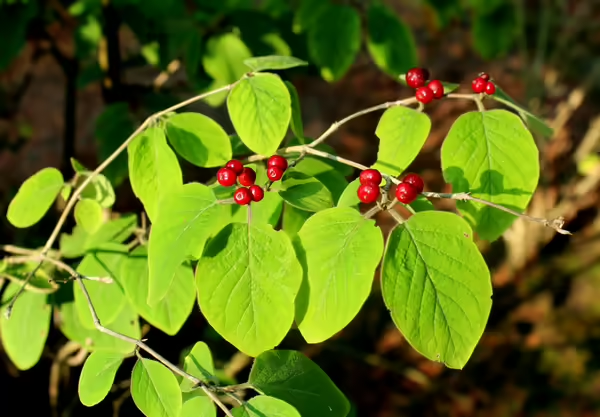
FREEPORT, Ill-----Fall can be a suitable time to address some landscape plant issues. Woody plants and other perennials can best be managed during the fall. If you have noticed some plant types are taking over your landscape, this is the time to exercise some control for a better next year, whether as part of the fall cleanup of flower beds or more deliberate removal of undesirable plants.
Join Illinois Extension and Freeport Park District for Fall Invasive and Nuisance Plants in the Landscape Workshop. Extension Educator Jay Solomon will lead the discussion on Thursday, Sept. 14, from 5:30 to 7 p.m. at the Mogel Building in Oakdale Nature Preserve, 4433 S Cranes Grove Rd, Freeport. We will delve into what makes some plants invasive or a nuisance and why fall is the better time to manage them. The workshop will help those with a home landscape or small acreage get started. Bruce Cubberley, Superintendent of Parks & Natural Resources, Freeport Park District, will give an update on invasive species management in the parks. There is no fee to attend the program, but pre-registration is required by Sept. 10. To register or for more information, please visit us online at go.illinois.edu/jsw or call us at 815-235-4125.
Why right now? “Most woody and many perennial plants tend to be putting nutrient reserves back into the roots to help jump-start next year’s growth,” Solomon continues. “Disrupting this process by removing the above-ground portion and selectively using herbicides can dramatically reduce the population next year. Also, woody invasive plants tend to be the last to go dormant in the winter. Leaving the green plants in an otherwise dormant landscape, easy to locate.” Mechanical (cutting or pulling), chemical control, and combinations of methods will be discussed.
“It is helpful to understand the difference between invasive plant and nuisance plant classifications,” Solomon points out. “Invasive plants are non-native, introduced by humans, and do cause environmental or economic harm. Nuisance plants are defined as causing management issues or other damage. Many native plants can become a nuisance in disturbed soils of landscapes and other areas.”
The workshop will delve into how to identify the differences and management methods. Fall is an excellent time to identify and work on controlling many of these plants in our landscapes, timber, and prairie areas. Woody invasive plants such as autumn olive, buckthorn, bush honeysuckle, and multiflora rose are easier to identify and manage this time of year.
Why should we be concerned about invasive plants? “These plants are classified as invasive species because they are not native to the area and have distributive growth habits. They establish easily and displace native plants in our landscape without providing the same benefits to nature,” comments Solomon. “For example, bush honeysuckle can take over the understory of a forest area. Preventing tree seedlings from establishing, reducing safe and suitable nesting locations for songbirds, and the berries provide a lower nutrition level for these birds. There are no winners except the bush honeysuckle.”
What about nuisance plants? “The wet spring followed by dry summer has opened the door for some plants to become a noticeable nuisance. Some ground covers, creeping vines, mulberry, Pokeweed, and hemlock have grown well this year. We will discuss concerns and management ideas for these.
Illinois Extension leads public outreach for University of Illinois by translating research into action plans that allow Illinois families, businesses, and community leaders to solve problems, make informed decisions, and adapt to changes and opportunities. Illinois Extension is part of the University of Illinois Urbana-Champaign College of Agricultural, Consumer and Environmental Sciences.